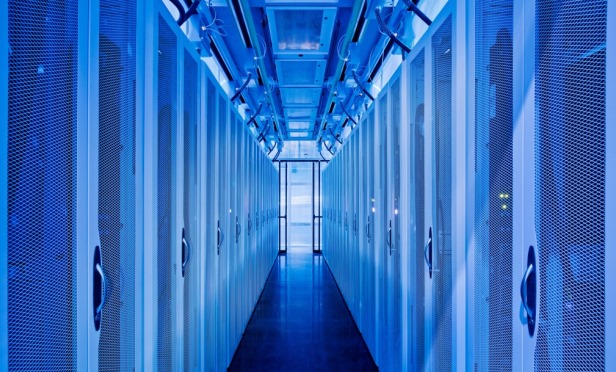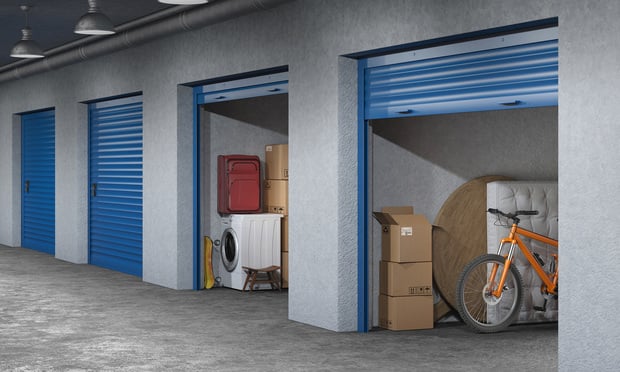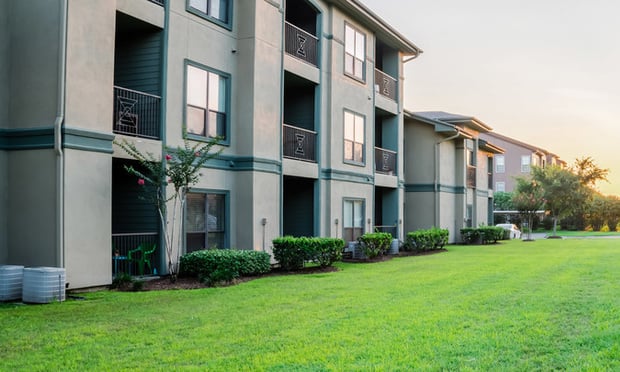
PLANO, TX—Insight recently signed a lease for power and space in Aligned's Plano data center. John Greenwood, senior vice president at Aligned Data Centers, discussed the location more in detail, along with data center trends in this GlobeSt.com exclusive.
GlobeSt.com: Is Plano's growth blast the impetus for this data center location?
John Greenwood: Plano is one of the fast-growing metro areas in the country. Businesses are moving here, the population is growing and it's a great place to live and work. That's why we decided to land our first data center in this thriving city. Plano is home to Toyota North America, JCPenney, Alliance Data Systems, Rent-a-Center, Cinemark Holdings, Dr. Pepper Snapple Group, Frito-Lay and many other companies. Additionally, we liked the relative proximity to both DFW Airport and Love Field because we're also serving companies based in other parts of the country. It is for these reasons that 451 Research rates Plano as a top five multi-tenant data center market in the US.
GlobeSt.com: What else does the location offer tenants in the way of advantages?
Greenwood: The location is unique in that the data center is diversely fed from two separate substations. Most data centers are fed from a single substation, which can be problematic if the substation experiences issues or failures. There is also an abundance of fiber optic connectivity for customers to choose from among a diverse set of network providers. Perimeter fencing, security cameras, laser-beam detection, dual-factor authentication and 24/7 on-site security guards all provide added security and peace-of-mind for our customers.
GlobeSt.com: How do tenants benefit from flexible colocation services and cost savings?
Greenwood: At a high-level, multi-tenant data center colocation companies provide space, power, cooling, network and security in support of a customer's information technology infrastructure. Most data center companies provide a contractual guarantee of 100% uptime on power and network because of the redundancy of the data center infrastructure and diversity of feeds (both network and utility). The challenge the industry faces is one of differentiation. Aligned Energy is delivering the same set of services that customers have grown to expect in their data center provider, but we're doing it with greater efficiency through an innovative electrical and mechanical platform. A simple proof-point of our efficiency is demonstrated by our Power Usage Effectiveness (PUE) of 1.15. PUE is a measure of how efficiently a data center uses energy, specifically, how much energy is used by the computing equipment (in contrast to cooling and other overhead). By way of comparison, the industry average for PUE is about 1.5. Thus, the efficiency we're delivering results in about 30% savings for our customers from that one measure alone.
Our efficiency is also realized in water savings. Through our conductive cooling system, we reimagined data center cooling. We saw an opportunity to reverse the chiller system. Instead of using tons of water to cool servers, we discovered how to remove the heat. Seizing this discovery, we patented and developed a highly-optimized modular heat removal cycle that has enabled us to use up to 80% less energy for cooling and up to 85% less water compared to traditional chilled water data center environments. And while efficiency drives savings for our customers, it also lowers the environmental impact of the data center without sacrificing reliability.
Another key driver of our service is flexibility. Because of the innovative design of our data center, we're able to adapt to the customers' workload and tune our data center accordingly. The traditional data center is designed in a very static way, forcing customers to tune the IT load to fit the data center. We've flipped that dynamic so that customers can drop in cabinets in any configuration with any power density from low to high. This is an enormous advantage for customers because they're no longer constrained by the data center operator from a power and cooling standpoint. Our customers find this flexibility to be one of our greatest differentiators.
GlobeSt.com: Explain more in depth how data operations using less water and energy consumption pass savings on to the customer.
Greenwood: There are two primary components that make up the cost a customer pays inside a multi-tenant data center. There is an infrastructure charge that includes the associated critical data center components dedicated to a customer's environment such as the raw space, generators, switch gear, batteries, UPS, etc. This is usually a fixed fee paid per month regardless of actual utilization. The second component is a variable charge that is based on actual utilization as measured by energy consumption. Picture your home utility bill that fluctuates from month to month based on kilowatt hours consumed. Imbedded in this electricity charge is also the cooling factor or PUE. The lower the PUE, as noted previously, the better from a cost standpoint. Together, these charges represent the total monthly fee. When customers contract for data center services, they do so under long-term agreements. Contractual commitments generally range from five to 10 years. Given the rate of change in technology, customers often struggle to predict how much power they'll need a year from now, much less 10. Thus, often customers err on the high side of needs to avoid a shortage of capacity. This is why the multi-tenant data center industry hovers around 50% utilization when analyzing contracted capacity versus actual utilization. Because of our unique engineering and technology, we're able to offer customers the industry's first pay-as-you-grow model whereby they can reserve ready-to-go capacity, but are only charged for what they've provisioned on the data center floor. For those customers who want to procure data center space and power in the traditional way, we're also flexible in that regard too. Either way, there are tremendous economic and environmental benefits to our platform.
GlobeSt.com: What other data center trends are currently at the forefront?
Greenwood: There are three trends that we are seeing that will continue to be a big focus for our industry in 2017: cyber security, high-performance computers and IoT.
Convergence of security layers: Cyber security needs are moving beyond the traditional firewalls on the network and encryption at endpoints. Cyber wars of today require the convergence of physical infrastructure, networks and software layers enabling dynamic coordination. The increased reliance on mobile devices and increased adoption of IoT require companies to think more holistically about security and focus on end-to-end solutions. This requires next-generation data center infrastructure that can dynamically adapt to changing requirements.
The debate on where rack densities are going is settled. The answer is all of the above. Infrastructure needs to be able to dynamically adapt to dynamic power and cooling requirements, and efficiently move from low density storage to high performance compute rack densities as high as 40kW and beyond.
The IoT space is thriving. Many of the large enterprises have significant IoT initiatives underway with data center infrastructure and cloud infrastructure capable of building a robust and secure IoT platform.

PLANO, TX—Insight recently signed a lease for power and space in Aligned's Plano data center. John Greenwood, senior vice president at Aligned Data Centers, discussed the location more in detail, along with data center trends in this GlobeSt.com exclusive.
GlobeSt.com: Is Plano's growth blast the impetus for this data center location?
John Greenwood: Plano is one of the fast-growing metro areas in the country. Businesses are moving here, the population is growing and it's a great place to live and work. That's why we decided to land our first data center in this thriving city. Plano is home to Toyota North America, JCPenney,
GlobeSt.com: What else does the location offer tenants in the way of advantages?
Greenwood: The location is unique in that the data center is diversely fed from two separate substations. Most data centers are fed from a single substation, which can be problematic if the substation experiences issues or failures. There is also an abundance of fiber optic connectivity for customers to choose from among a diverse set of network providers. Perimeter fencing, security cameras, laser-beam detection, dual-factor authentication and 24/7 on-site security guards all provide added security and peace-of-mind for our customers.
GlobeSt.com: How do tenants benefit from flexible colocation services and cost savings?
Greenwood: At a high-level, multi-tenant data center colocation companies provide space, power, cooling, network and security in support of a customer's information technology infrastructure. Most data center companies provide a contractual guarantee of 100% uptime on power and network because of the redundancy of the data center infrastructure and diversity of feeds (both network and utility). The challenge the industry faces is one of differentiation. Aligned Energy is delivering the same set of services that customers have grown to expect in their data center provider, but we're doing it with greater efficiency through an innovative electrical and mechanical platform. A simple proof-point of our efficiency is demonstrated by our Power Usage Effectiveness (PUE) of 1.15. PUE is a measure of how efficiently a data center uses energy, specifically, how much energy is used by the computing equipment (in contrast to cooling and other overhead). By way of comparison, the industry average for PUE is about 1.5. Thus, the efficiency we're delivering results in about 30% savings for our customers from that one measure alone.
Our efficiency is also realized in water savings. Through our conductive cooling system, we reimagined data center cooling. We saw an opportunity to reverse the chiller system. Instead of using tons of water to cool servers, we discovered how to remove the heat. Seizing this discovery, we patented and developed a highly-optimized modular heat removal cycle that has enabled us to use up to 80% less energy for cooling and up to 85% less water compared to traditional chilled water data center environments. And while efficiency drives savings for our customers, it also lowers the environmental impact of the data center without sacrificing reliability.
Another key driver of our service is flexibility. Because of the innovative design of our data center, we're able to adapt to the customers' workload and tune our data center accordingly. The traditional data center is designed in a very static way, forcing customers to tune the IT load to fit the data center. We've flipped that dynamic so that customers can drop in cabinets in any configuration with any power density from low to high. This is an enormous advantage for customers because they're no longer constrained by the data center operator from a power and cooling standpoint. Our customers find this flexibility to be one of our greatest differentiators.
GlobeSt.com: Explain more in depth how data operations using less water and energy consumption pass savings on to the customer.
Greenwood: There are two primary components that make up the cost a customer pays inside a multi-tenant data center. There is an infrastructure charge that includes the associated critical data center components dedicated to a customer's environment such as the raw space, generators, switch gear, batteries, UPS, etc. This is usually a fixed fee paid per month regardless of actual utilization. The second component is a variable charge that is based on actual utilization as measured by energy consumption. Picture your home utility bill that fluctuates from month to month based on kilowatt hours consumed. Imbedded in this electricity charge is also the cooling factor or PUE. The lower the PUE, as noted previously, the better from a cost standpoint. Together, these charges represent the total monthly fee. When customers contract for data center services, they do so under long-term agreements. Contractual commitments generally range from five to 10 years. Given the rate of change in technology, customers often struggle to predict how much power they'll need a year from now, much less 10. Thus, often customers err on the high side of needs to avoid a shortage of capacity. This is why the multi-tenant data center industry hovers around 50% utilization when analyzing contracted capacity versus actual utilization. Because of our unique engineering and technology, we're able to offer customers the industry's first pay-as-you-grow model whereby they can reserve ready-to-go capacity, but are only charged for what they've provisioned on the data center floor. For those customers who want to procure data center space and power in the traditional way, we're also flexible in that regard too. Either way, there are tremendous economic and environmental benefits to our platform.
GlobeSt.com: What other data center trends are currently at the forefront?
Greenwood: There are three trends that we are seeing that will continue to be a big focus for our industry in 2017: cyber security, high-performance computers and IoT.
Convergence of security layers: Cyber security needs are moving beyond the traditional firewalls on the network and encryption at endpoints. Cyber wars of today require the convergence of physical infrastructure, networks and software layers enabling dynamic coordination. The increased reliance on mobile devices and increased adoption of IoT require companies to think more holistically about security and focus on end-to-end solutions. This requires next-generation data center infrastructure that can dynamically adapt to changing requirements.
The debate on where rack densities are going is settled. The answer is all of the above. Infrastructure needs to be able to dynamically adapt to dynamic power and cooling requirements, and efficiently move from low density storage to high performance compute rack densities as high as 40kW and beyond.
The IoT space is thriving. Many of the large enterprises have significant IoT initiatives underway with data center infrastructure and cloud infrastructure capable of building a robust and secure IoT platform.
Want to continue reading?
Become a Free ALM Digital Reader.
Once you are an ALM Digital Member, you’ll receive:
- Breaking commercial real estate news and analysis, on-site and via our newsletters and custom alerts
- Educational webcasts, white papers, and ebooks from industry thought leaders
- Critical coverage of the property casualty insurance and financial advisory markets on our other ALM sites, PropertyCasualty360 and ThinkAdvisor
Already have an account? Sign In Now
*May exclude premium content© 2025 ALM Global, LLC, All Rights Reserved. Request academic re-use from www.copyright.com. All other uses, submit a request to [email protected]. For more information visit Asset & Logo Licensing.








